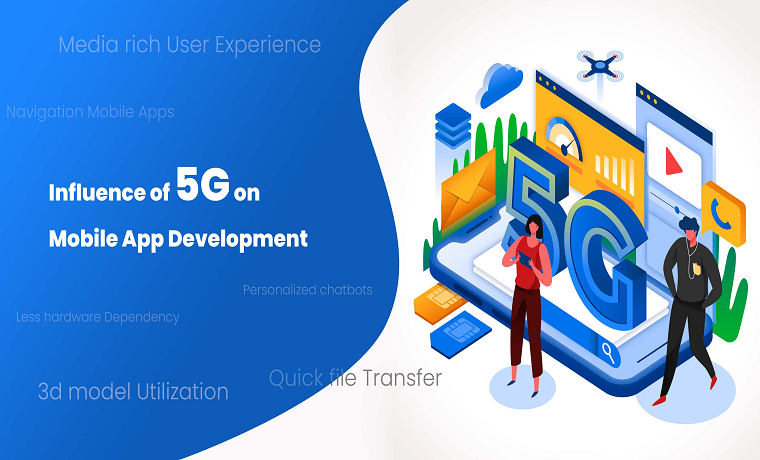5G started gaining momentum in 2019, and its prevalence is expected to increase rapidly over the next few years and beyond. Just as 4G completely changed our expectations of mobile devices, 5G is set to add even more speed and functionality to our smartphones.
While companies around the world are making progress every day, they’ve only scratched the surface of 5G’s potential. In this article, we’ll cover some of the most important effects of 5G on mobile apps. Don’t forget to check out our website to learn more about involving 5G in your iPhone app development.

5G vs. 4G
Increased speed is the most obvious benefit of 5G compared to 4G, and it’s the first thing you’ll notice after switching to the new network. In fact, 5G is expected to be roughly ten times faster than existing 4G systems, leading to a more seamless online experience.
For example, downloading an entire movie could go from five or ten minutes to less than one. Reduced latency will also improve the experience of virtual reality and augmented applications on 5G networks. In general, applications that would have been unrealistic with 4G will now become more accessible to mobile users.
Gaming and Video
As mentioned above, lower latency times are another key advantage of 5G networks. These are particularly relevant in situations where even small delays could significantly impact the experience. Mobile multiplayer gaming has struggled to keep up with PC and console experiences, largely due to latency issues for 4G users.

5G will allow mobile users to interact with others in real-time without experiencing any noticeable latency. While hardware will still limit the possibilities of mobile gaming, developers will be able to work on more ambitious projects for 5G devices.
Integrating Technologies
Cloud-based applications will also become increasingly viable as 5G connections make mobile networks more robust. Data from the cloud can seamlessly be integrated into applications for immediate responsiveness without any additional complexity.
While many of these processes are technically possible on a 4G connection, they use too much time and data to be practical in most contexts. With more speed and less latency, developers will have the opportunity to integrate new technologies without slowing the app down.
5G is already available in a variety of cities around the United States, and it will only continue to grow in the near future. These are just a few of the key ways in which 5G connections are set to disrupt current strategies in mobile app development.

